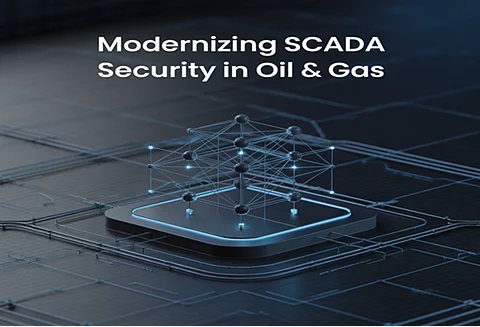

In today's world, Vilas Shewale, an independent researcher in the field of industrial cybersecurity, explores pragmatic innovations to secure legacy SCADA systems in oil and gas infrastructures. His work focuses on cost-effective, high-impact strategies tailored to operational constraints.
The oil and gas industry continues to rely heavily on Supervisory Control and Data Acquisition (SCADA) systems, many of which were designed decades ago—long before cybersecurity became a critical concern. These legacy systems, which underpin vital national infrastructure, now face a rapidly evolving threat landscape with limited built-in defenses. From unsupported operating systems to unencrypted communications and unauthenticated protocols, their vulnerabilities are both numerous and serious. However, replacing these systems entirely is often cost-prohibitive and operationally disruptive, especially for large-scale industrial operations. In this high-stakes environment, practical, targeted cybersecurity innovations are not just helpful—they are absolutely essential for safeguarding critical assets and ensuring operational continuity.
One of the most impactful strategies involves network segmentation—a foundational element in defense-in-depth architecture. Surprisingly, fewer than 10% of industrial organizations maintain a formal separation between their IT and OT networks. This leaves control systems exposed to cyber threats that can originate from less secure corporate environments.
By strategically dividing the network into security zones and conduits, companies can restrict lateral movement within the system. This implementation, guided by international standards, significantly reduces the risk of unauthorized access. Segmentation not only isolates critical infrastructure but also enables organizations to monitor and validate communication flows, creating an effective perimeter within legacy systems.
Traditional IT intrusion detection systems often fall short in industrial environments because they lack the capability to interpret specialized industrial protocols. In these settings, protocol-aware intrusion detection systems (IDS) offer a significant security advantage. Designed to understand protocols like Modbus, DNP3, and others—commonly used without encryption or authentication in legacy SCADA systems—these IDS solutions deliver targeted protection tailored to industrial operations.
A key strength of these systems is behavioral analysis, which learns normal communication patterns and flags anomalies such as irregular command frequencies, unexpected payloads, or unauthorized devices. Because this monitoring is passive, it introduces no operational disruptions, making it ideal for high-availability environments where downtime is unacceptable. Enhanced visibility and precision make protocol-aware IDS a vital component in modern industrial cybersecurity strategies.
Patching outdated SCADA systems can introduce more instability than security, making it a risky approach in critical infrastructure like oil and gas. As a compensatory strategy, application whitelisting proves highly effective—allowing only pre-approved applications to run while blocking any unauthorized or malicious code, even when systems are exposed to malware or phishing attacks.
To strengthen this further, host hardening techniques provide additional layers of defense. Disabling unused ports, minimizing user privileges, implementing BIOS protections, and removing unnecessary services significantly reduce the system’s attack surface. Combined, these methods create a resilient environment where legacy SCADA systems can operate securely—without relying on frequent patching or full-scale replacements.
For the most sensitive operations, such as controlling pipelines or managing safety systems, unidirectional security gateways—also known as data diodes—offer an unparalleled level of protection. These devices ensure that data can only flow in one direction, typically from the control system to the business network. This physically enforced one-way communication blocks any chance of malicious commands traveling back into the control network.
Whether it's enabling real-time data monitoring for analytics or distributing patches safely, these gateways preserve operational capabilities while eliminating risks of bidirectional communication. Hardware-based implementations, in particular, offer the highest assurance, making them ideal for safeguarding mission-critical infrastructure.
Addressing the digital security risks of legacy SCADA systems goes beyond the theoretical approach; it requires practical and flexible approaches that recognize the realities of operations and costs. A layered approach using network segmentation, protocol-aware monitoring, application whitelisting, host hardening, and unidirectional gateways helps organizations maximize their cybersecurity without having to replace all the devices.
Those marvelous changes create a defense-in-depth framework in an environment in which systems are vulnerable to the creation of resilience strategies, safety, and continuity. In sectors where the availability of facilities is crucial, these approaches immediately consider allowing organizations to move forward while respecting the technology developments and the evolving requirements of the present-day threat landscape.
In the words of Vilas Shewale, effective cybersecurity does not merely mean reacting to threats- it means actively designing systems that can resist them. His formulation provides a blueprint for the security practitioners themselves as well as policymakers charged with protecting the backbone of energy infrastructure.
